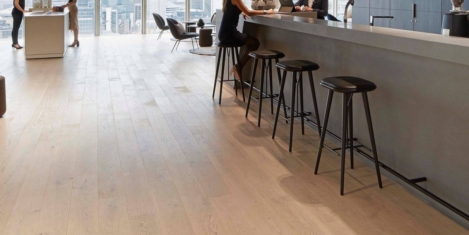March 22, 2017
Employers in industries reliant on overseas workers will be hardest hit by Brexit 0
 Accommodation and food services, manufacturing, and transport industries will be hardest hit by limits on movement of EU and non-EU workers following Brexit, a new report has claimed. The latest edition of Mercer’s Workforce Monitor has highlighted how reliant certain sectors of the UK economy have become on EU-born and non-EU born workers, as respectively, 33 percent, 23 percent and 20 percent of accommodation and food services, manufacturing, and transport are made up of non-UK-born nationals, meaning companies in those sectors, and those reliant on them, are especially at risk from the changes in the UK’s migration policy. According to Gary Simmons, Partner at Mercer, “Since 2013, the UK-born workforce has been declining as people retire and we can see how reliant certain industries are on overseas workers filling the gaps. The UK is likely to impose more stringent migration controls in the future and this will reduce the number of overseas workers available.”
Accommodation and food services, manufacturing, and transport industries will be hardest hit by limits on movement of EU and non-EU workers following Brexit, a new report has claimed. The latest edition of Mercer’s Workforce Monitor has highlighted how reliant certain sectors of the UK economy have become on EU-born and non-EU born workers, as respectively, 33 percent, 23 percent and 20 percent of accommodation and food services, manufacturing, and transport are made up of non-UK-born nationals, meaning companies in those sectors, and those reliant on them, are especially at risk from the changes in the UK’s migration policy. According to Gary Simmons, Partner at Mercer, “Since 2013, the UK-born workforce has been declining as people retire and we can see how reliant certain industries are on overseas workers filling the gaps. The UK is likely to impose more stringent migration controls in the future and this will reduce the number of overseas workers available.”










 The
The 
 The majority (79 percent) of workers say reliable and modern technology is more important to them than office aesthetics, while accessories such as ping pong tables, slides, hammocks and wacky office designs may look good in pictures, but they don’t necessarily make employees any happier or productive. The is according to a survey, conducted by storage firm Kiwi Movers, which found that 86 percent of UK adults who work in an office said fun features were of no specific value to their working life, 11 percent said they were nice-to-have and of some value and 3 percent said they were very valuable. The most popular office perks are those offer an immediate tangible benefit to the employee, but even so, as many as 23 percent don’t take advantage every day; while 71 percent overall said they’d like more space in their office and of those, 58 percent believe that could be achieved by removing non-essential items. The research also found that younger workers were more likely on average to take advantage of ‘environmental’ perks like chill out areas and recreational equipment.
The majority (79 percent) of workers say reliable and modern technology is more important to them than office aesthetics, while accessories such as ping pong tables, slides, hammocks and wacky office designs may look good in pictures, but they don’t necessarily make employees any happier or productive. The is according to a survey, conducted by storage firm Kiwi Movers, which found that 86 percent of UK adults who work in an office said fun features were of no specific value to their working life, 11 percent said they were nice-to-have and of some value and 3 percent said they were very valuable. The most popular office perks are those offer an immediate tangible benefit to the employee, but even so, as many as 23 percent don’t take advantage every day; while 71 percent overall said they’d like more space in their office and of those, 58 percent believe that could be achieved by removing non-essential items. The research also found that younger workers were more likely on average to take advantage of ‘environmental’ perks like chill out areas and recreational equipment.




















